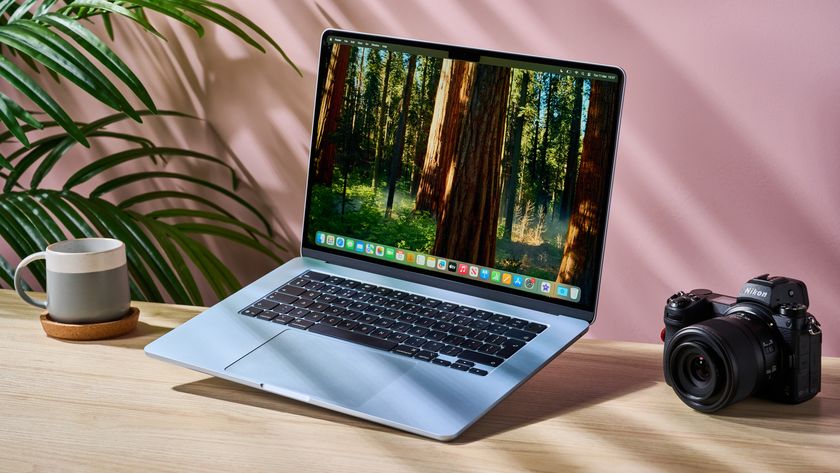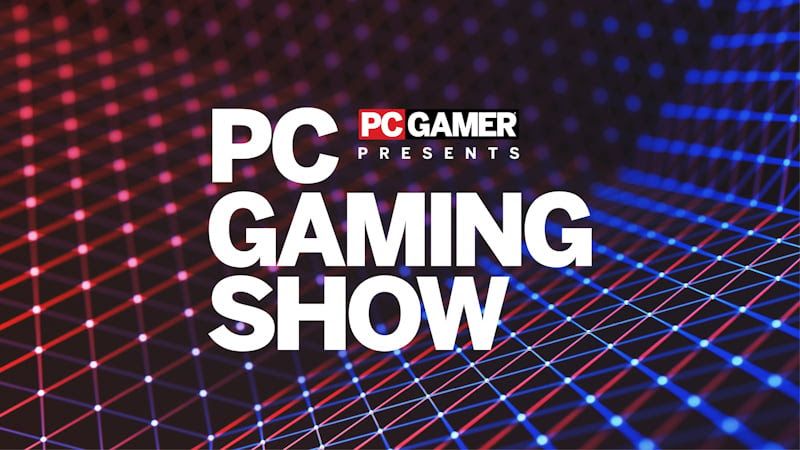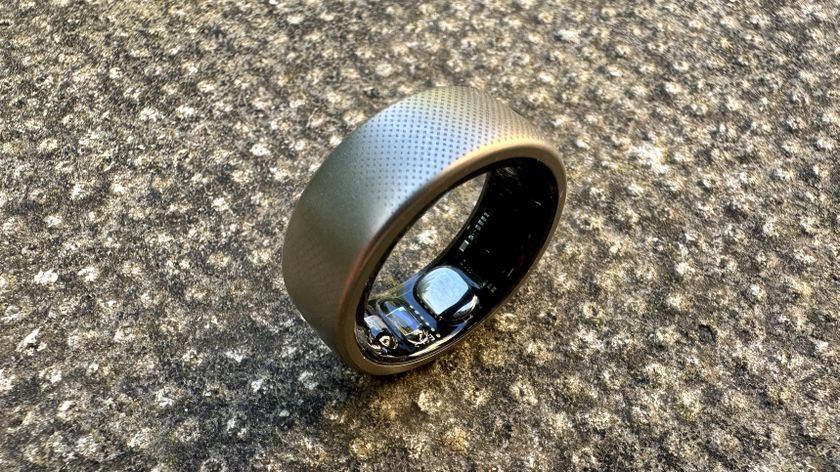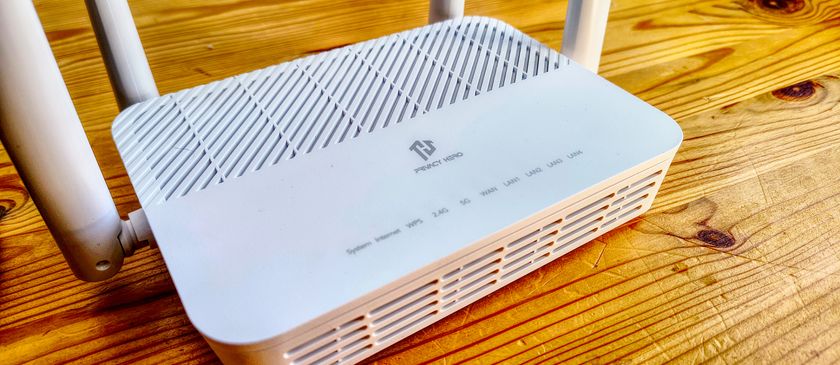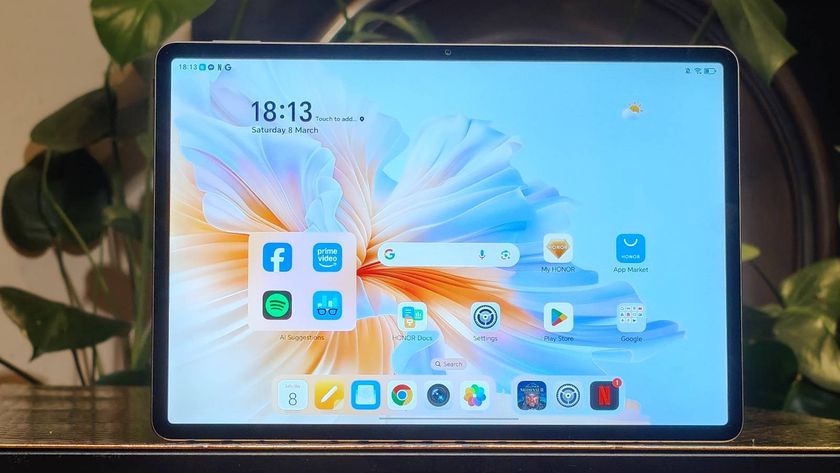TechRadar Verdict
We do feel there should be a touch more "awesome" at this price, but once you've gazed adoringly into the Retina Display, you'll struggle to not hate any tablet that isn't this good.
Pros
- +
Great display
- +
Easier connector
- +
Faster innards
Cons
- -
Not much of an update
- -
Still slightly weighty
- -
Price is too high
Why you can trust TechRadar
There was much umbrage at the launch of the new iPad 4, as it basically rendered the iPad 3 obsolete mere months after launch. However, with only a minor CPU and front camera change, is there really any point thinking about upgrading?
The question most people ask us when it comes to the new iPad 4 is: what's different from the old one? Or the iPad 2, for that matter?
Well, in this case it's pretty easy: there's a Retina Display that makes everything look superbly crisp, an updated A6X processor with much superior performance, the same 5MP camera on the rear with a 1.3MP HD sensor on the front now to replace the VGA effort.
Oh, and the new iPad 4 is now running iOS 6 out of the box (well, it's also on the likes of the iPhone 5 and iPad mini, but hey, we've already reviewed those, and you don't really care unless it's a new iPad, do you?)
The design of the new iPad 4 isn't really anything different from the original duo from Apple's tablet range. Actually, while we're thinking about it, it looks almost identical to the iPad 2 – to the point you'd struggle to tell them apart when turned off.
However, in the hand, there's a little bit of a difference, especially when it comes to the weight. The new iPad is nearly 60g heavier than the second iteration, and while it's not terrible, it does add a little arm strain during a marathon movie session.

Sometimes you become accustomed to the weight of a device if you use it enough, and then the whole debacle becomes a completely none issue.
However the weight of the iPad 4 is still noticeable even a few months after first get
ting it - pick it up and hold it for the duration of a movie and that unmistakable heft is still there to haunt you.
Retina Display
Before we get onto all the normal insight over the frame of the new iPad 4, it's worth talking about one top feature: the Retina Display.
Apple has packed a huge amount more pixels into the 9.7-inch screen - 1536 x 2048 to be exact. However, despite the fact that the Cupertino brand makes a big thing about the 330 PPI density of the iPhone 4S, we're looking at a screen that's technically a lot less sharp than its smartphone brethren - around 264PPI.

Apple has got around this fact by stating that the screen is meant to be held 15 inches from the face, rather than the 10 inches the iPhone is supposed to be from your eyes, and as such the sharpness is the same.
Given the fact the term 'Retina Display' really isn't a legally binding term, we don't care. What matters is the effect - and it's one of the most impressive we've seen on a tablet to date. If someone took an iPad, printed out a really hi-res image of an iOS system and stuck it on the front, we'd struggle to tell the difference - it's superb, and even squinting up close you'll be hard pushed to notice any pixelation.
The colour reproduction will also appeal to many, as it's pretty close to reality - it lacks the punch of the Super AMOLED HD screens seen on the likes of the Samsung Galaxy Note 2 for instance, but it will depend on personal preference as to whether that's a good thing.

We like the vivid colours of Samsung's screens, but we know plenty of people that loathe them too.
The main thing is things like internet browsing; photo viewing and movie sessions are all much, much improved over the iPad 2, and is one of the main reasons to pick up the new iPad.
Design
The new iPad, as we said, is only marginally thicker and a little heavier than the iPad 2, and if you pick it up with no knowledge of the former, you'll likely be mighty impressed.
The rest of the design is premium too - given you can be paying nearly £700 / $AU900 for a top end model, it needs to seem like a worthwhile investment, and it does.
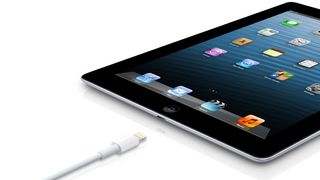
There's also the new Lightning connector on offer, which brings the smaller, faster port for all your needs... unless your need is to use you recently purchased dock, in which case you'll need to fork out for an adaptor.
The curved edges, the oleophobic scratch-proof glass and the aluminium chassis are all the kind of thing that some Android tablets have tried to ape and failed. Of course, many will prefer the feather-light frames of some of the Samsung models but, like the screen, it really comes down to personal preference.
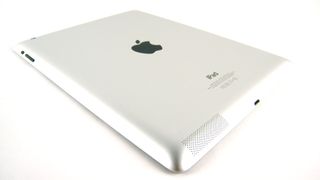
The buttonry on the new iPad is pretty sparse though - we're talking four buttons and that's your lot.
The iconic home button is back once again, despite rumours of its demise, and is easy to reach and hit within the thick bezel.

The rest of the buttons are all clustered tightly together in the top left-hand corner of the new iPad, with the rocker/volume key, the mute/orientation switch and power/lock key all within an inch of one another.
As you can see, Apple has been pretty efficient with the button placement, with all of them performing more than one function. And they say the iPad can't multi-task... tsk.

Gareth has been part of the consumer technology world in a career spanning three decades. He started life as a staff writer on the fledgling TechRadar, and has grew with the site (primarily as phones, tablets and wearables editor) until becoming Global Editor in Chief in 2018. Gareth has written over 4,000 articles for TechRadar, has contributed expert insight to a number of other publications, chaired panels on zeitgeist technologies, presented at the Gadget Show Live as well as representing the brand on TV and radio for multiple channels including Sky, BBC, ITV and Al-Jazeera. Passionate about fitness, he can bore anyone rigid about stress management, sleep tracking, heart rate variance as well as bemoaning something about the latest iPhone, Galaxy or OLED TV.







